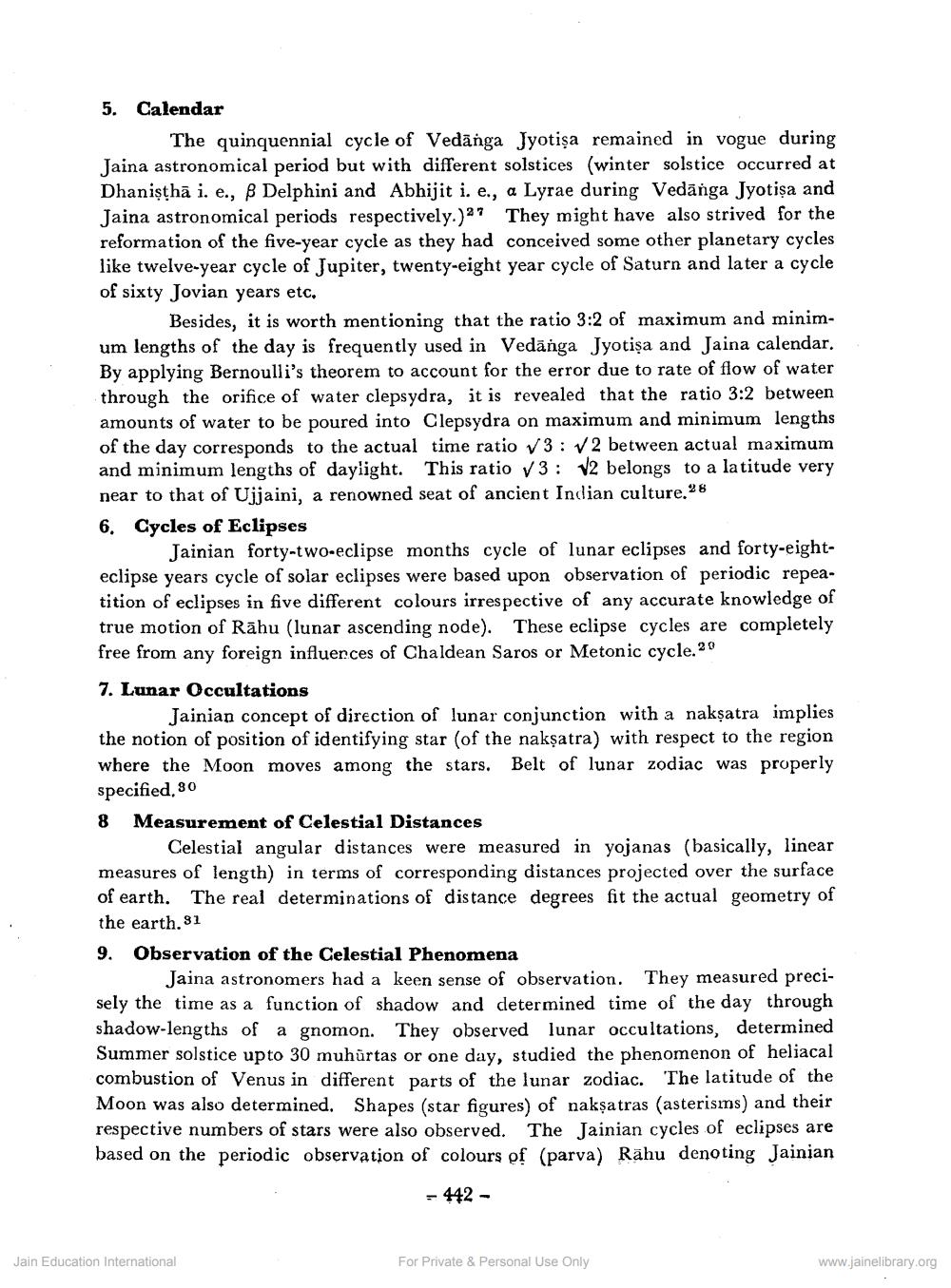________________
5. Calendar
The quinquennial cycle of Vedānga Jyotişa remained in vogue during Jaina astronomical period but with different solstices (winter solstice occurred at Dhanisthā i. e., B Delphini and Abhijit i. e., a Lyrae during Vedānga Jyotisa and Jaina astronomical periods respectively.) 27 They might have also strived for the reformation of the five-year cycle as they had conceived some other planetary cycles like twelve-year cycle of Jupiter, twenty-eight year cycle of Saturn and later a cycle of sixty Jovian years etc.
Besides, it is worth mentioning that the ratio 3:2 of maximum and minimum lengths of the day is frequently used in Vedānga Jyotişa and Jaina calendar. By applying Bernoulli's theorem to account for the error due to rate of flow of water through the orifice of water clepsydra, it is revealed that the ratio 3:2 between amounts of water to be poured into Clepsydra on maximum and minimum lengths of the day corresponds to the actual time ratio ✓3: V2 between actual maximum and minimum lengths of daylight. This ratio V3: 12 belongs to a latitude very near to that of Ujjaini, a renowned seat of ancient Indian culture. 26 6. Cycles of Eclipses
Jainian forty-two-eclipse months cycle of lunar eclipses and forty-eighteclipse years cycle of solar eclipses were based upon observation of periodic repeatition of eclipses in five different colours irrespective of any accurate knowledge of true motion of Rāhu (lunar ascending node). These eclipse cycles are completely free from any foreign influences of Chaldean Saros or Metonic cycle.20 7. Lunar Occultations
Jainian concept of direction of lunar conjunction with a naksatra implies the notion of position of identifying star (of the nakṣatra) with respect to the region where the Moon moves among the stars. Belt of lunar zodiac was properly specified, 30 8 Measurement of Celestial Distances
Celestial angular distances were measured in yojanas (basically, linear measures of length) in terms of corresponding distances projected over the surface of earth. The real determinations of distance degrees fit the actual geometry of the earth. 31 9. Observation of the Celestial Phenomena
Jaina astronomers had a keen sense of observation. They measured precisely the time as a function of shadow and determined time of the day through shadow-lengths of a gnomon. They observed lunar occultations, determined Summer solstice upto 30 muhurtas or one day, studied the phenomenon of heliacal combustion of Venus in different parts of the lunar zodiac. The latitude of the Moon was also determined. Shapes (star figures) of nakşatras (asterisms) and their respective numbers of stars were also observed. The Jainian cycles of eclipses are based on the periodic observation of colours of (parva) Rāhu denoting Jainian
- 442 -
Jain Education International
For Private & Personal Use Only
www.jainelibrary.org




